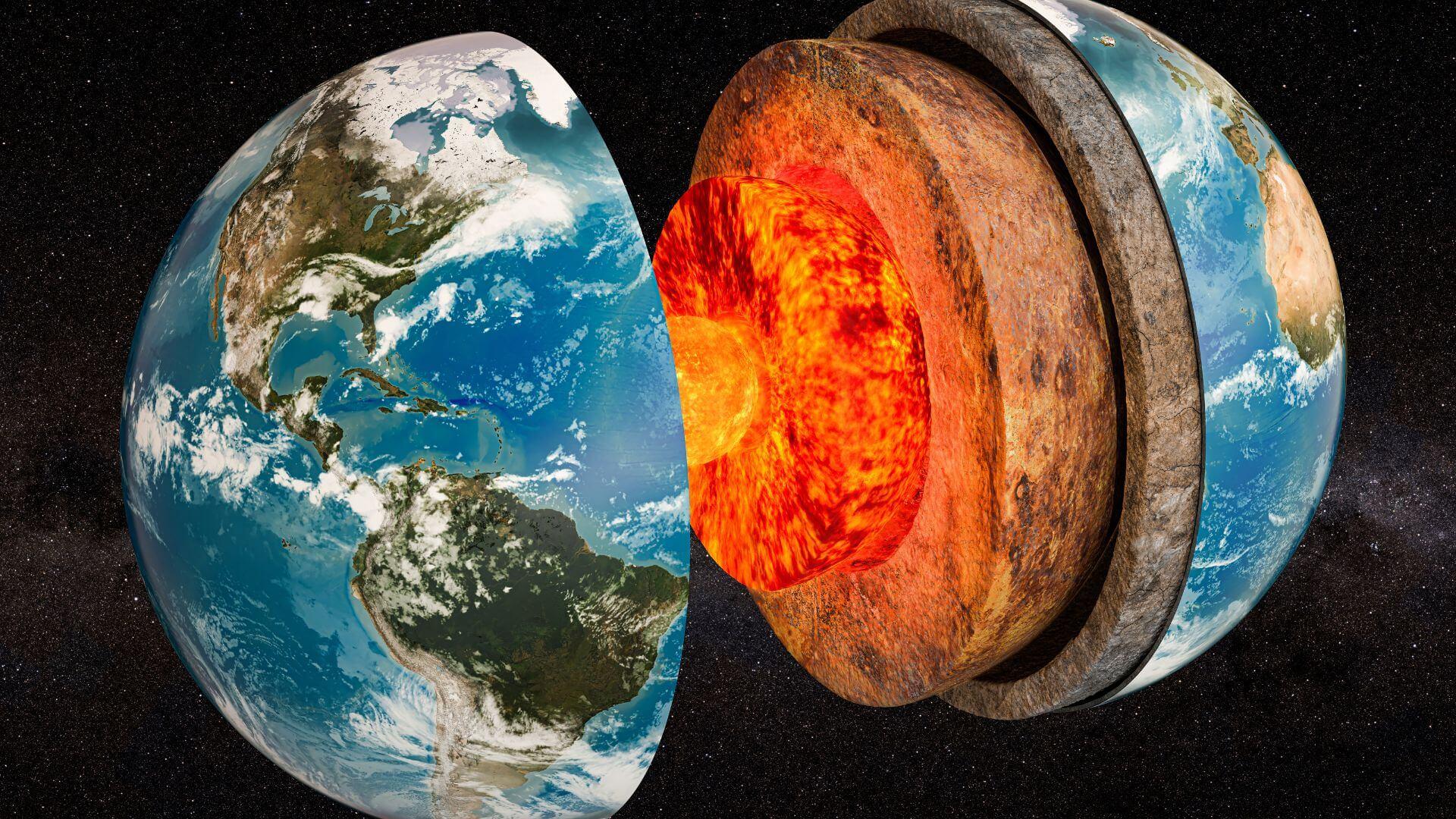Large rock masses ‘different’ from the rest of the Earth’s mantle has been intriguing scientists for decades
A series of strange underground formations, deep below the earth’s crust and close to the core of our planet, have aroused the curiosity of numerous geologists around the world. Now, a team of researchers from the Australian, Utah, Arizona, and Calgary National Universities has thoroughly studied them with seismic waves. The results of their research are published in ‘ Nature Geoscience ‘.
Down there, thousands of kilometers below the surface of the planet, there are places where the speed of seismic waves is drastically reduced. Known as ‘ Ultra-Low Velocity Zones’ (ULVZ), these are enigmatic masses of rock denser than the rest. Masses that can be hundreds of km long and tens of km thick.
And very little is known about its composition and origin. Are they part of our planet from the beginning or are they fragments of alien worlds that collided with ours?
The new research has managed to shed some light on the mystery and show that these large areas are made of entirely different materials from their surroundings, and have remained largely unchanged for billions of years, suggesting that they could These are buried remains of the primitive Earth, fragments that come directly from the process of formation of our planet.
“For a long time,” explains Hrvoje Tkalčić of the Australian National University (ANU) and co-author of the study, “no one knew for sure what these mysterious ULVZs were made of. Now, we have developed the clearest picture yet. Using the advances in seismology and mathematical geophysics made at ANU, we have shown that ULVZs are layered. During the billions of years of Earth’s formation and reshaping, these zones have been churned up near the Earth’s core, but largely remained intact. It is like an egg in a cake, which does not mix with the rest of the ingredients and remains as a whole, with its yolk and white, despite the constant mixing around it.
Reverse engineering
The team, led by geophysicist Surya Pachhai of the University of Utah, focused on ULVZs located under the Coral Sea between Australia and New Zealand. Earthquakes are common in that region, often sending seismic waves through the core-mantle boundary, where the structures are located, making it an ideal place to study them.
However, instead of directly measuring seismic waves through nearly 3,000 kilometers of crust and mantle, the team of researchers used a reverse-engineering approach this time.
“We created a model of the Earth with ultra-low wave speed reductions and then ran a computer simulation that told us what the seismic waveforms would look like if the Earth was actually like that,” Pachhai explains. Our next step was to compare those predictions with the actual recordings we have.”
Over hundreds of thousands of simulation runs, the method eventually produced a mathematically robust model of the planet’s interior, showing that ULVZs are likely layered. Which gives us clues about how the Earth formed and evolved.
A hot and violent place
In its infancy, Earth was a hot and violent world. The Solar System itself was still forming, with rocks and planetoids constantly colliding with each other as they orbited the Sun. Later, about 4 billion years ago, a Mars-sized object, known to scientists as Teia, crashed into Earth, spewing debris into space that ended up forming the Moon. The tremendous impact also turned much of the Earth’s surface into magma, greatly raising the temperature. “As a result -says Pachhai-, a large mass of molten material was formed, known as an ocean of magma”.
A jumble of rocks, gases, and crystals was suspended in the midst of this magma. And as it cooled, the denser materials sank deeper into the Earth’s mantle. Time passed, centuries became millennia, and then eons. The mantle churned up and forced these denser fragments into small patches, forming ultra-low velocity zones.
Unexpected diversity
But the most surprising finding, according to Pachhai, is that ULVZs are more diverse than previously thought. «In fact -he explains-, the ULVZ are not homogeneous but contain strong structural and compositional variations within them. We found that these types of ULVZs can be explained by chemical heterogeneities created early in Earth’s history and that even today, after 4.5 billion years of mantle convection, they are not well mixed.”
According to the study, other types of ULVZ could also exist, for example as a result of the oceanic crust melting, sinking back into the mantle. But that will be the subject of further research.
